In my experience of introducing thousands of people to their first experience… it is only "experienced" canoeists, accustomed to plopping their butts in tubs of canoes that require practically no skill or balance, who are surprised by… tenderness.
STABILITY IN A TRADITIONAL CANOE
How comfortable we feel in a canoe comes down to many things, and a single tweak of a design can have implications for:
How easy our canoe is for us to control. That's how predictable we find the handling when we're being turned or we're deliberately manoeuvring;
How hard we have to work in our canoe, especially when we are working to avoid being pushed into difficulties;
How capable we find our canoe in more challenging conditions, so we are not struggling, or caught off-guard, in wind and waves;
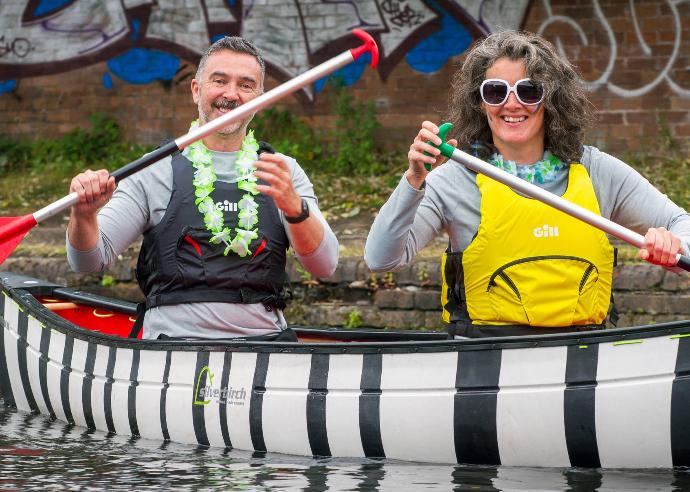
An appropriate canoe can help ensure we're not caught off-guard by how our canoe handles, and that we don't have to work really hard to control the canoe in the wind, or to avoid a hazard. These linked design challenges mean choosing an "appropriate" canoe depends on both the canoeist and the anticipated environments.
When loaded appropriately, and handled appropriately, pretty much all traditional canoes are remarkably stable… but we can fall out of any canoe, and prioritising "stability" can make life harder. This means canoe stability is more complex than barge, raft or big boat stability!
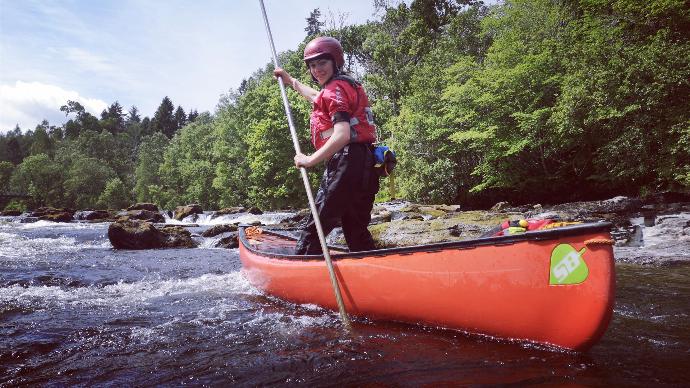
THE STABILITY OF THE CANOEIST
Being agile, balanced and co-ordinated on dry land may be a wonderful thing, but if we're new to canoeing, we should anticipate a period of re-adjustment - being afloat in a canoe means becoming a part of a canoe stability system!
Note: "fundamental movement skills" are a myth, and skills do NOT transfer - we all have to develop canoeing skills by doing something LIKE canoeing!
Old hands may talk of Primary Stability, which is what we notice when we're sat still, balanced in the canoe, on perfectly flat water. We can think of it as how much the canoe feels like being on dry land, or on a fishing platform.
Extreme primary stability might be achievable with a heavy, wide canoe, with a flat bottom and a keel, but is generally better achieved, in the short run, by creating a raft from two canoes. In practice, we may do better when we value Secondary Stability. This refers to the way stability changes as the canoe is put on edge.
Feeling stable in a canoe starts with developing our feel for how our canoe behaves on the water. We will find that easiest in a canoe where the righting force on the canoe increases progressively as the canoe is put on edge by the canoeist or by waves.
STARTING OUT AS A NOVICE
As a rule, we all do better to start out in conditions where we can be confident trying things without worrying too much about getting things wrong… in which case, most of us will quickly grow into any appropriate enthusiast canoe.
Away from ideal conditions, our priorities might change. We might seek a canoe that's less responsive (easier), but more reassuring (which feels safer).
In practice, what counts as "suitably responsive" may actually determine what we find "reassuring enough"… because a canoe that we find too sensitive for good directional control may well be found unsettling.
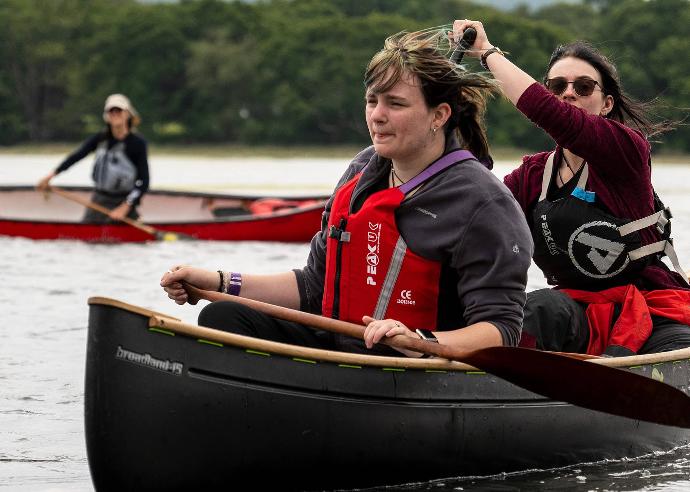
At one extreme, we may find almost a canoe extremely stable, but struggle with it in the wind, then over-stretch and fall in. At the other extreme, we might only feel comfortable if our canoe is exceptionally stable, but we might feel confident pushing almost any canoe around, even in wind and waves.
Choosing a more stable should never (ever) be our first way to minimise risk when canoeing. Our first priority should be ensuring we can handle any situation where things don't go to plan - otherwise stability may just give the illusion of well-managed risk!
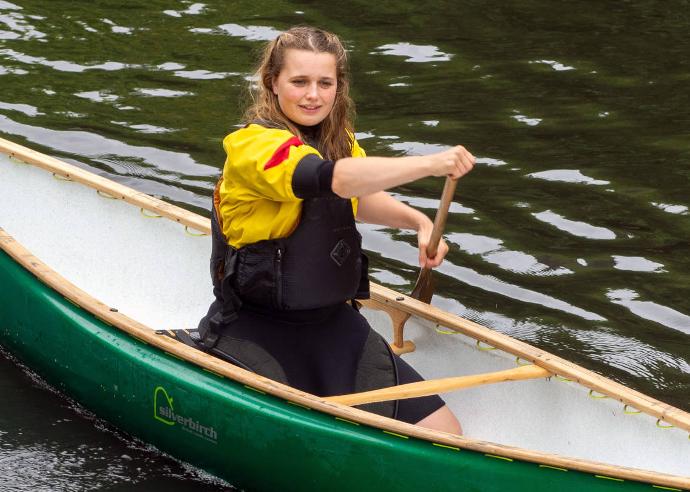
SITTING VS KNEELING FOR STABILITY
Differences in hull shape can mean two canoes which have comparable overall dimensions can feel completely different to the same canoeist. Classic design differences include:
Designs for the sitting canoeist: typically wider at the waterline, and commonly with a lower seat, so more stable on sheltered water, but potentially less confidence-inspiring in more challenging environments.
Designs for the kneeling canoeist: typically with a more arched cross-section, and feeling more "tender" on sheltered water, yet more confidence-inspiring in more challenging conditions.
If we can kneel down when we're wanting to feel more secure, we're likely to get on with pretty much any enthusiast canoe that is sized appropriately to our needs and purposes. If we're definitely wanting to sit most of the time, we might want to start with a more stable enthusiast canoe, or one with a low seat.
Stability for seated canoeists can be improved by having secure bracing points on each sidewall for each foot. This can be via a carefully places packs or via a footrest. Kneeling canoeists typically feel most secure when the waterline beam allows a comfortable knee-spread.
SIZED SERIES PERSONAL CANOES
In the 1880s, George W Sears' Adirondack Letters popularised a 3.2m (10'5") x 68.5cm (27") personal canoe in Forest and Stream, and today's personal canoes range from that size up to boats 5.2m (17') long or 81cm (32") wide.
A sized series of adult solo canoes may start with a shorter, 72cm (28.5") beam canoe that's more than stable enough for most smaller adults, and with a 76cm (30") beam canoe for the majority of adult males.
More "stable" models, perhaps offering a beam of 79cm (31") or more, may be marketed as "combi" solo/tandems, or as for whitewater canoeing.
Personal canoes may be designed for sitting. These may be wider at the waterline, with a lower seat, and may have a straighter keel-line (less rocker). Personal canoes designed for kneeling are typically designed to be more responsive, and can feel less stable until the canoeist is settled with a knee in each chine.
Smaller and lighter novices paddling more compact and responsive personal canoes can raise issues of directional stability (going in a straight line) rather than balance issues. A larger canoeist in a design for smaller paddlers is more likely to raise traditional stability issues.
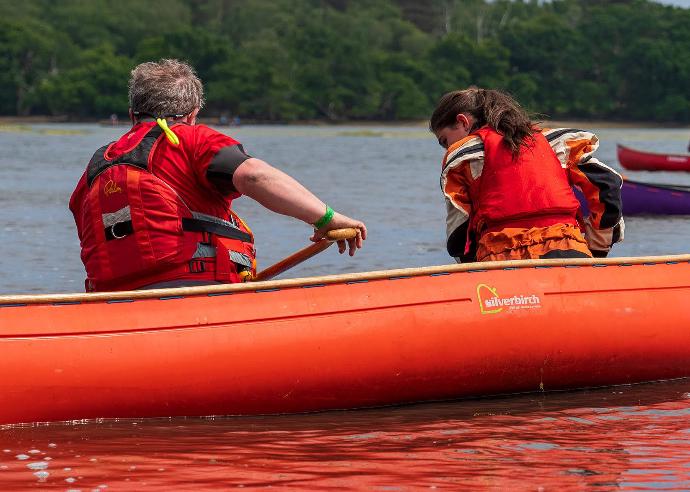
TRADITIONAL TANDEM CANOES
As a rule, pretty much any appropriately set up tandem canoe will feel reassuringly stable for most enthusiasts in most touring situations, and the majority of novices will manage just fine so long as they concentrate.
Tandem canoes typically feel more stable from the centre of the boat, especially in waves, but cruising along and manoeuvring are generally more enjoyable with seats closer to the bow and stern, where the canoe is narrower.
When unsure, or anxious, paddlers might move off any fixed seat, either to get a good knee-spread in the chines, or to sit lower in the canoe.
Stability when launching or landing can be found challenging, and is perhaps best practised in a controlled environment. A heavier stern paddler kneeling in the bottom of the canoe (off the seat) may help stabilise a canoe for a bow partner. Rafting canoes together for launch and landing can also help.
If any canoe is overloaded or is compromised by poor load distribution, stability might become a more noticeable issue. To maximise stability, we might adjust a sliding seat to balance the canoe from bow to stern. Where this isn't possible, moving bags around can help.


